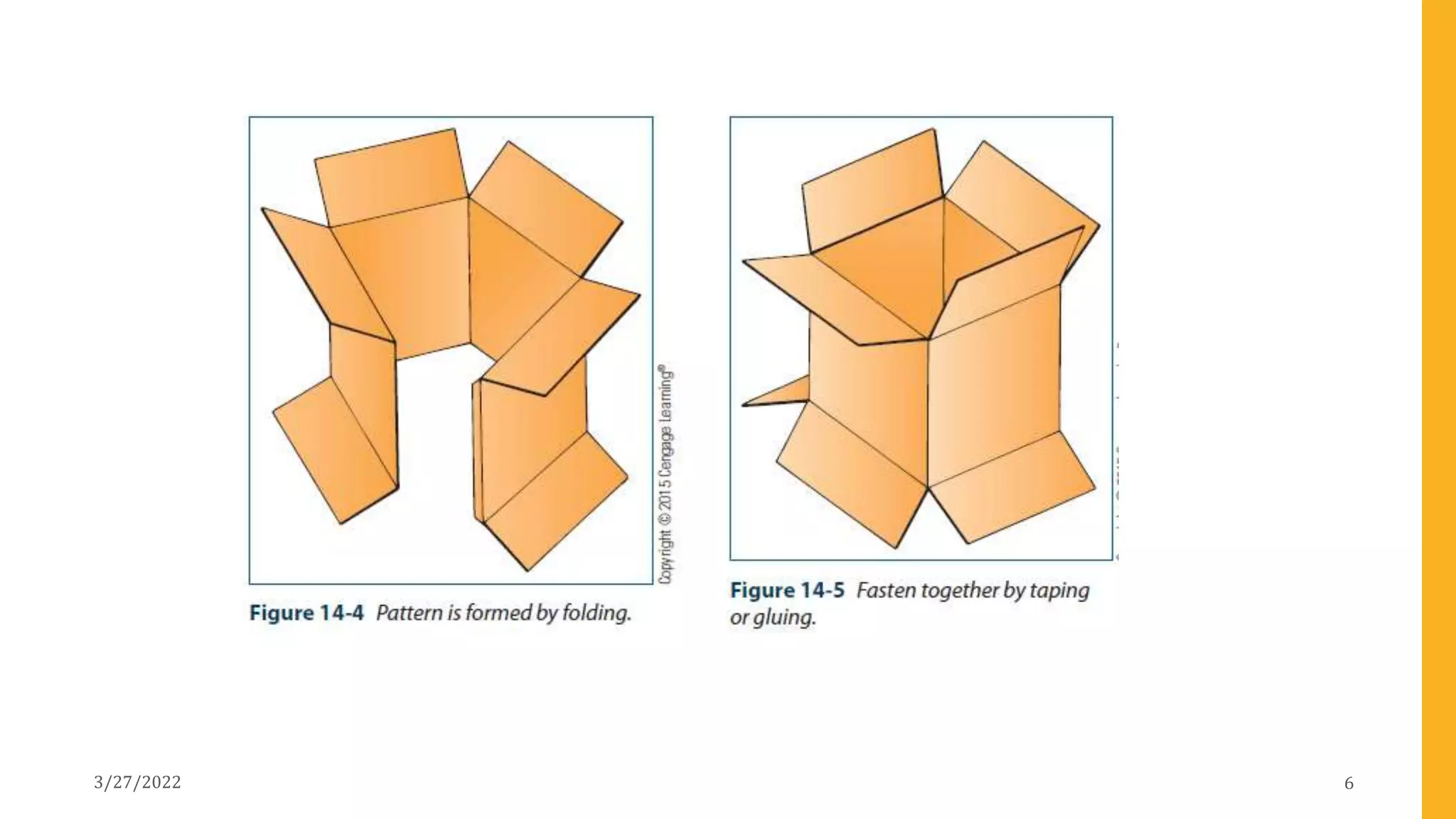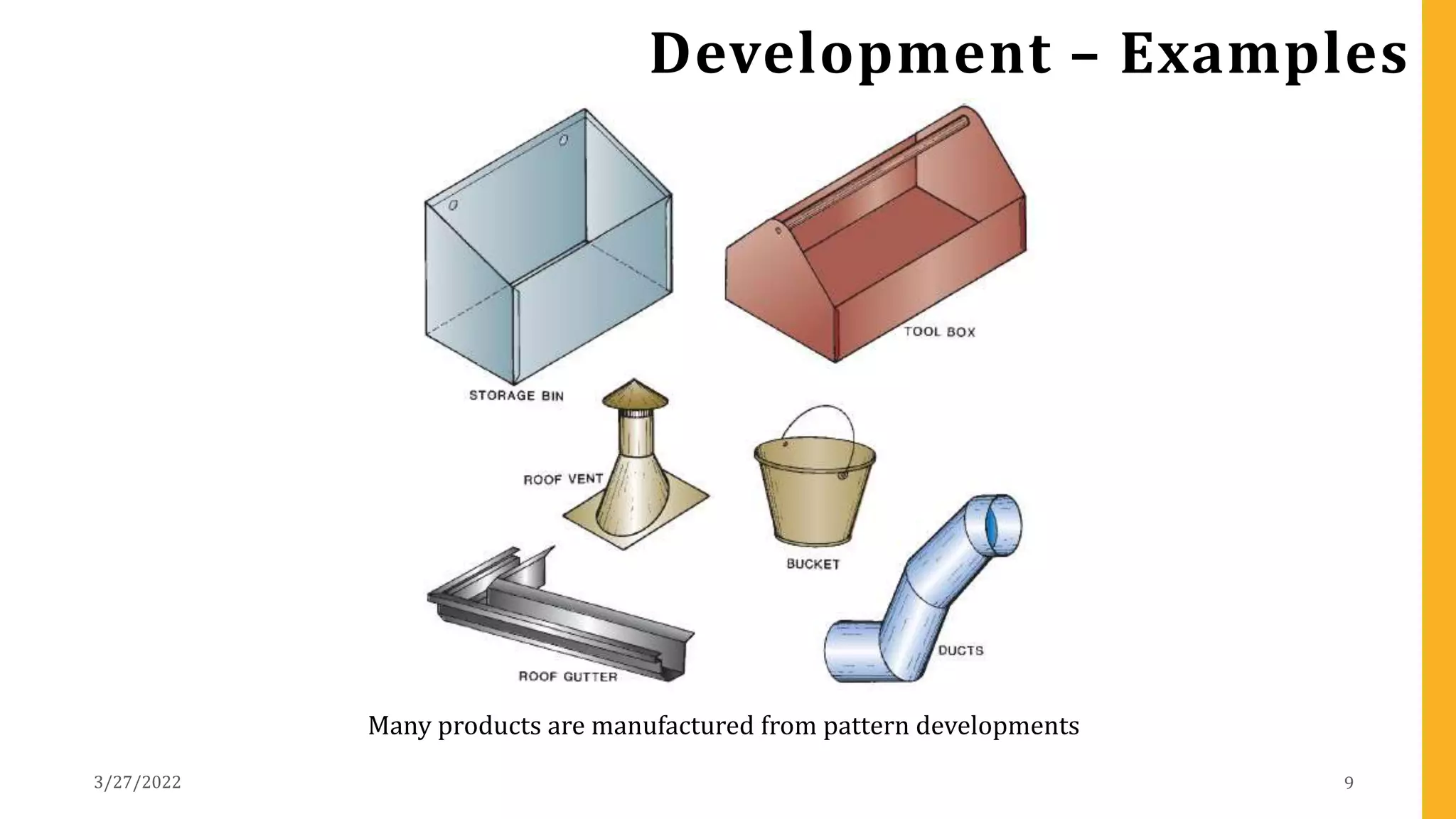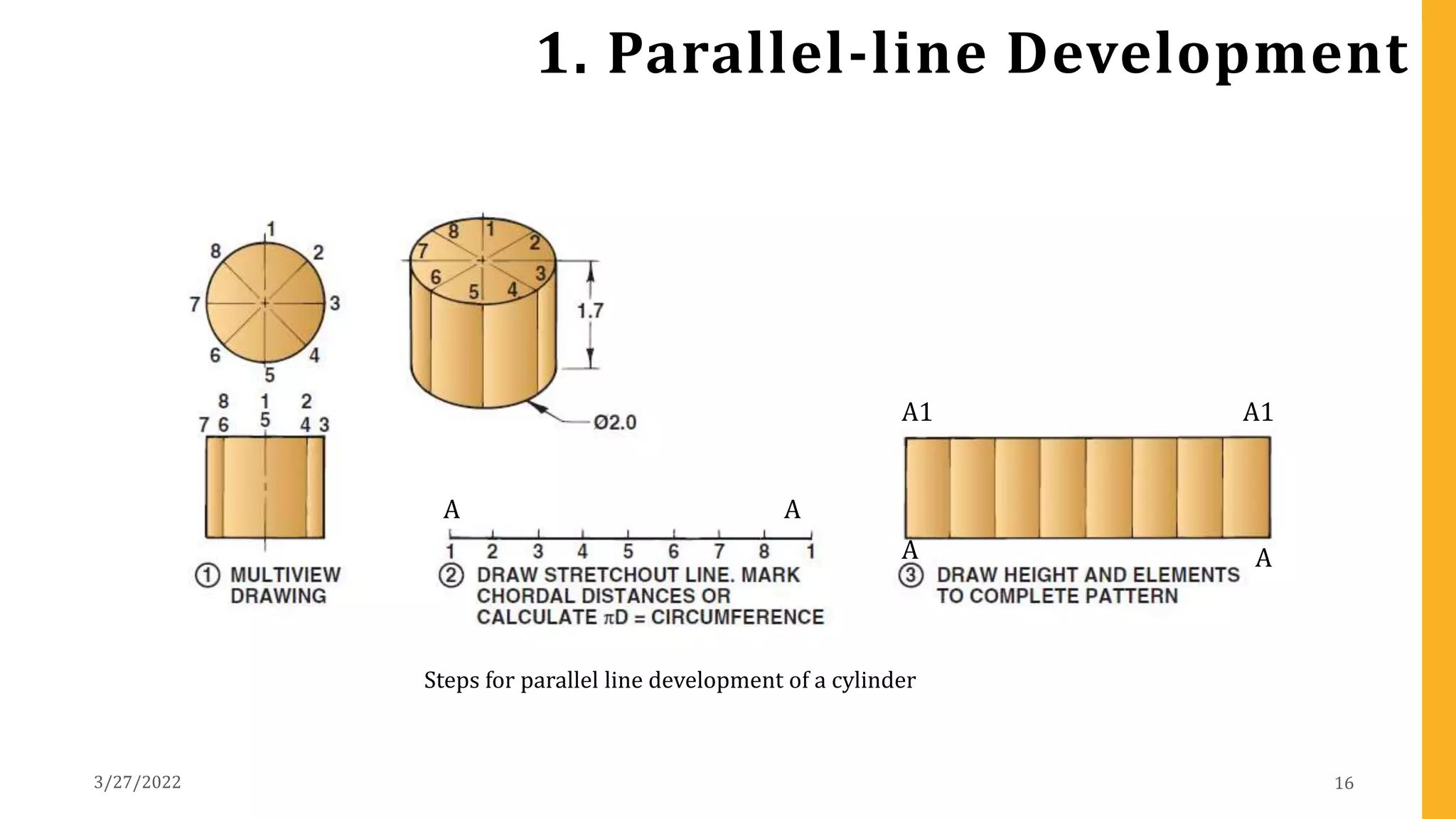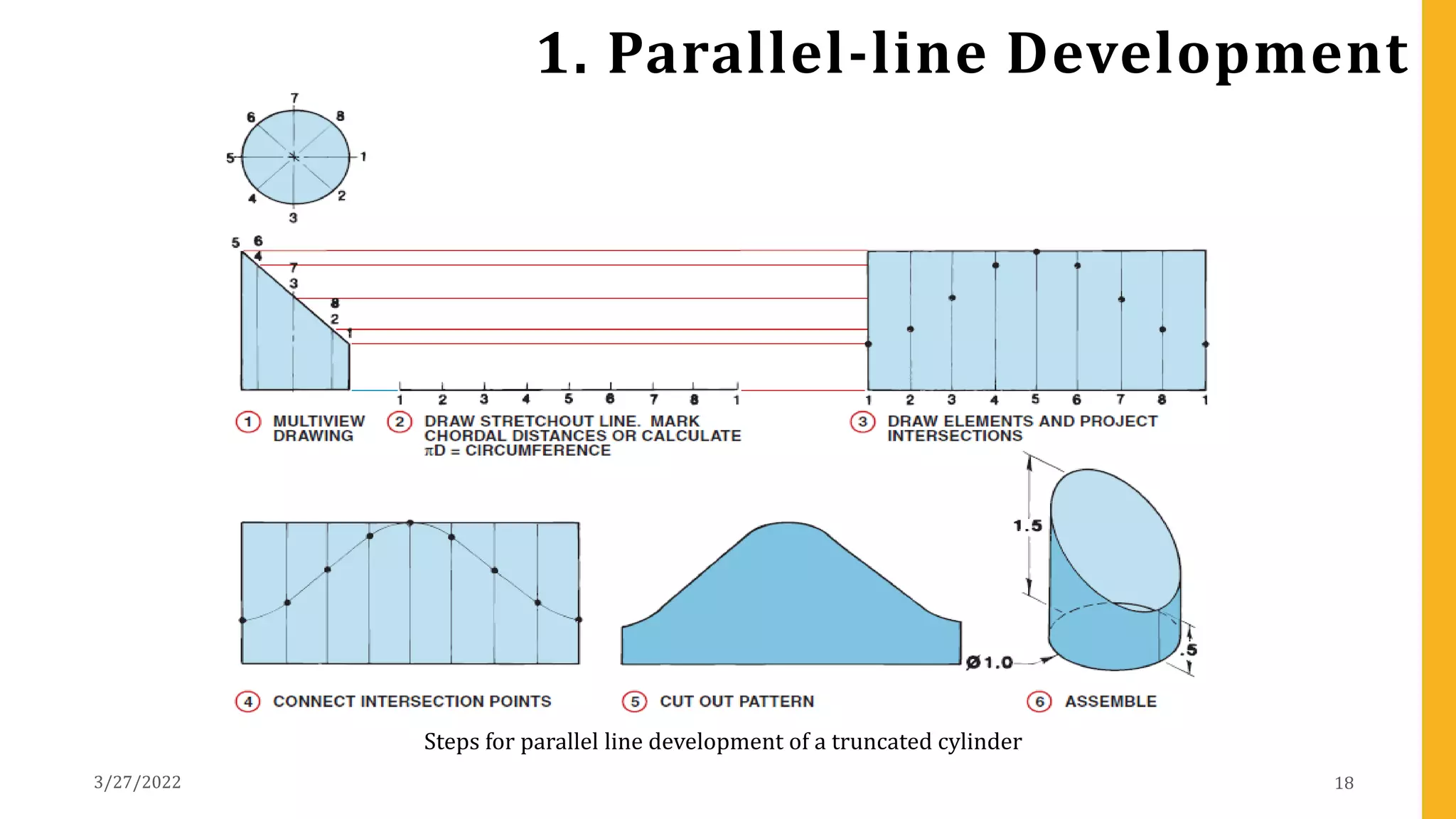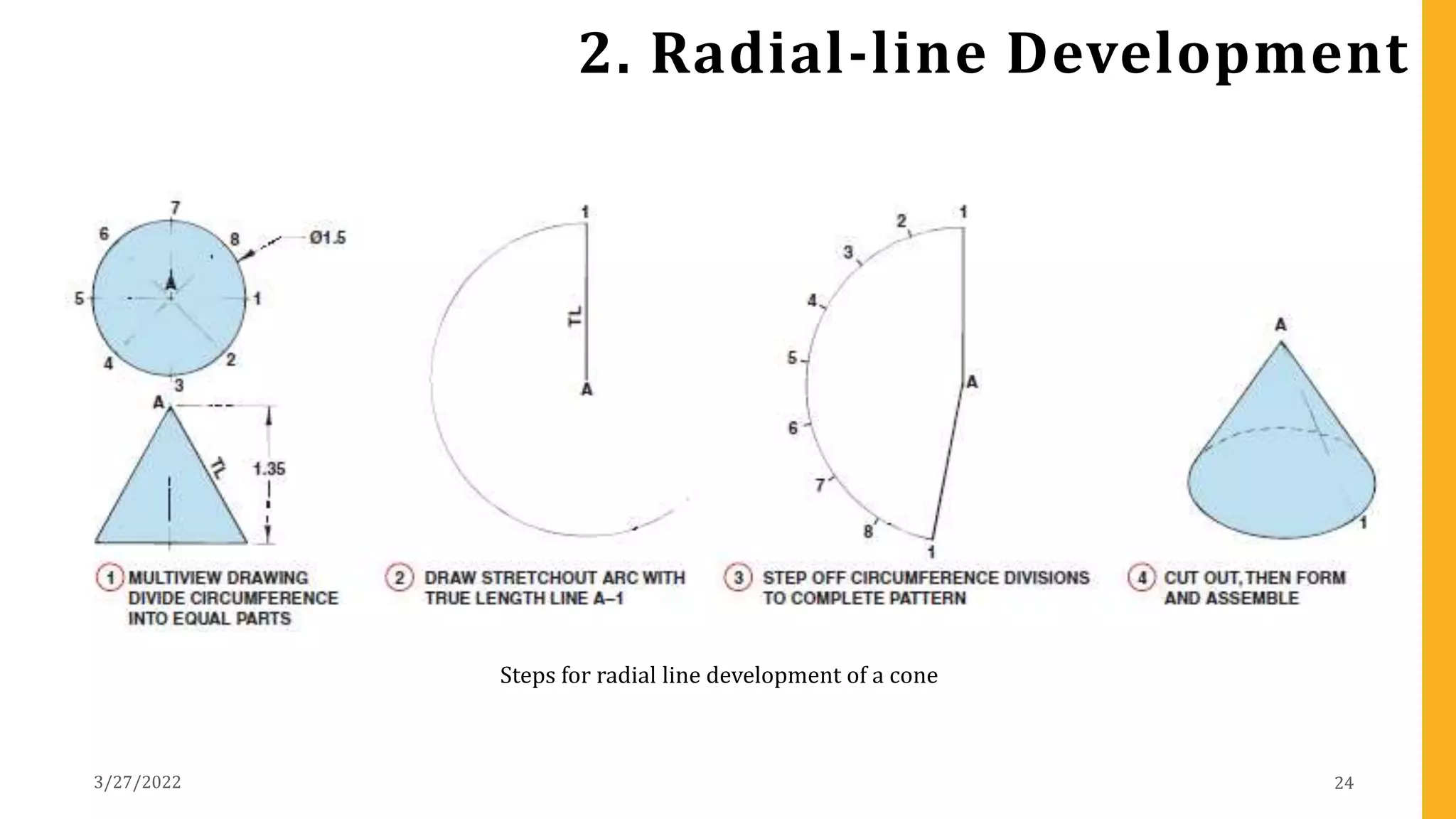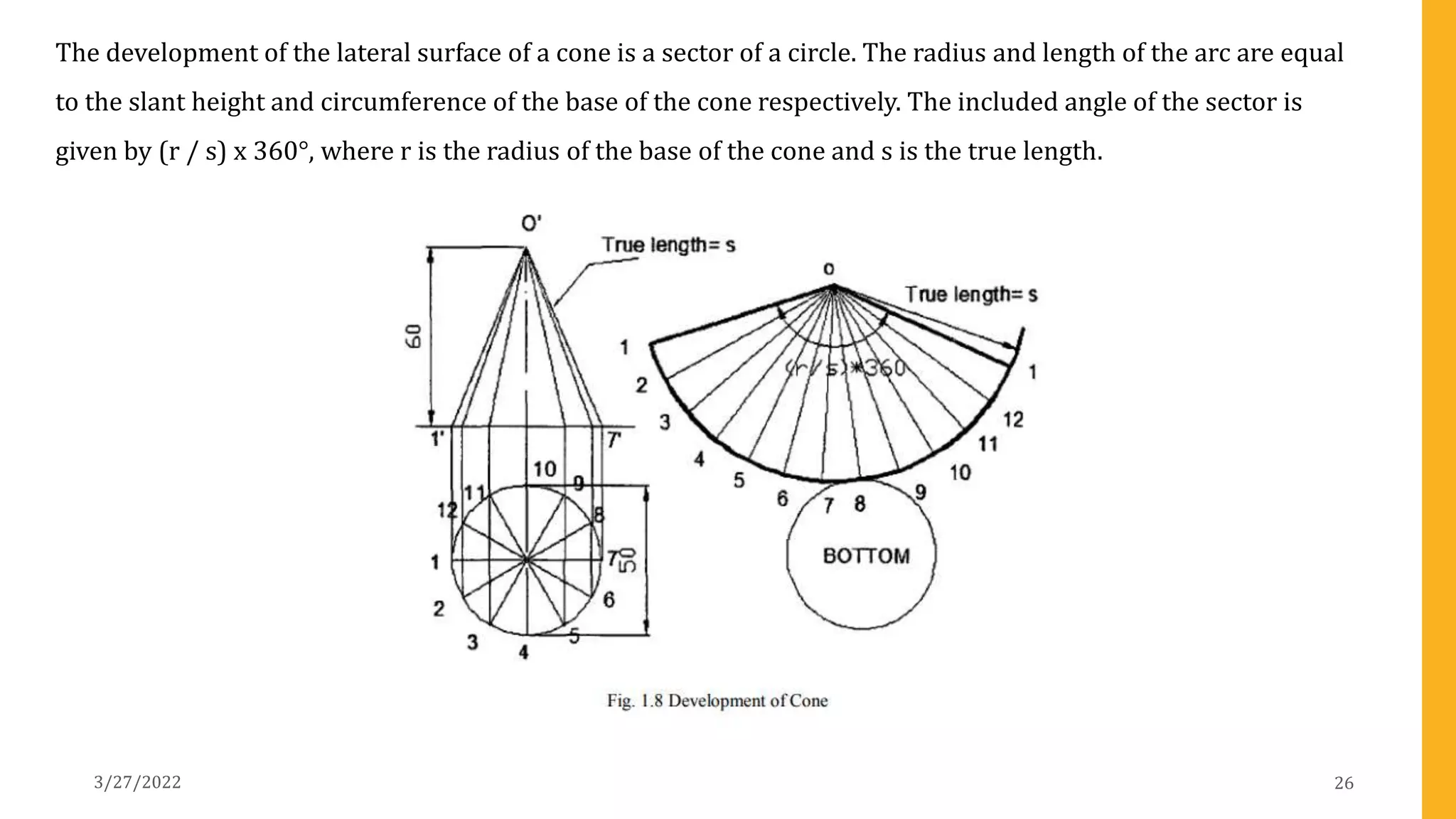This document discusses different methods for developing the surfaces of 3D objects onto 2D planes. It introduces parallel line development, which is used for objects with parallel edges like prisms and cylinders. Radial line development is used for forms with radiating lines like pyramids and cones. Triangulation development divides warped surfaces into triangles. Approximate development approximates double curved surfaces like spheres by developing zones cut from the surface. The key methods are parallel line, radial line, triangulation, and approximate development.





